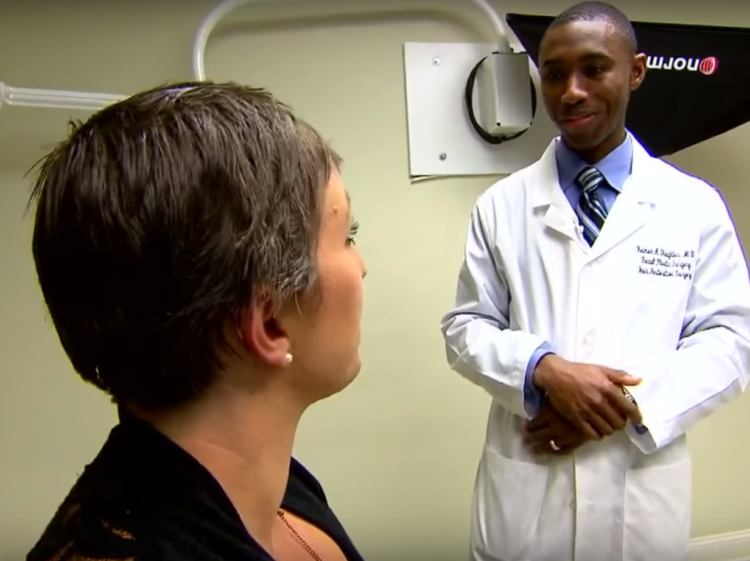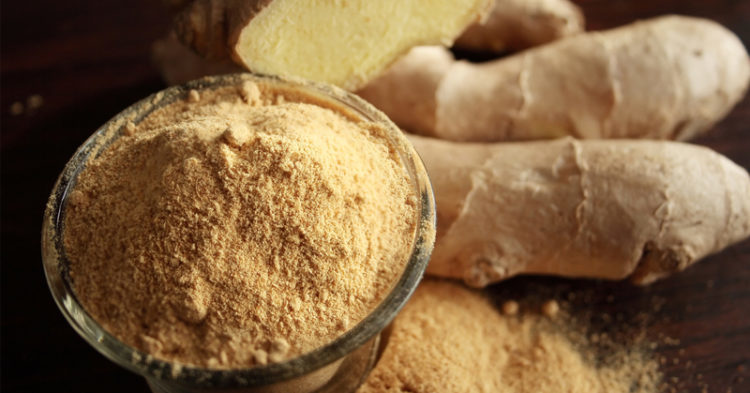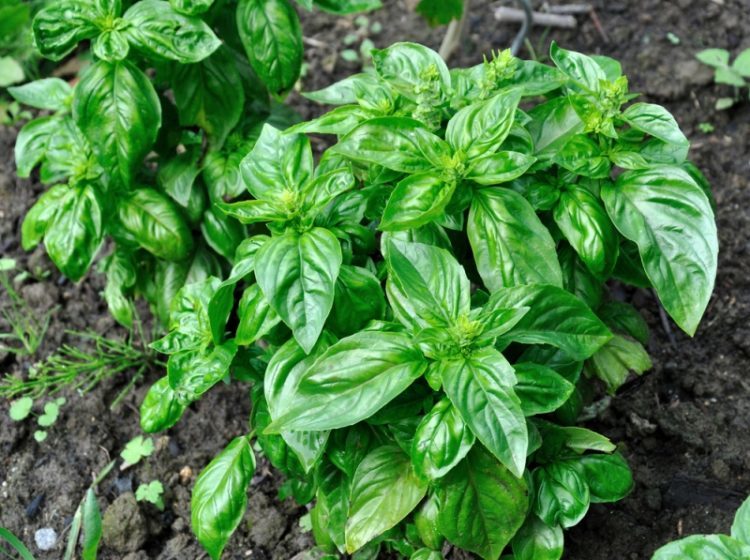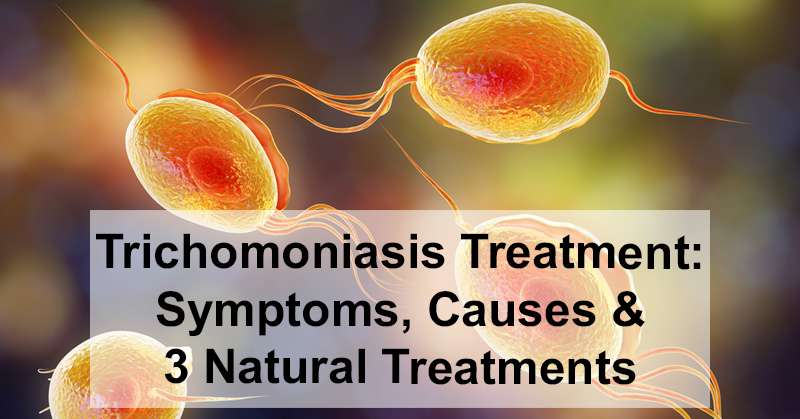Trichomoniasis, sometimes called “trich,” is one of the most common sexually transmitted diseases in the world. About 3.7 million people in the U.S. have trichomoniasis, making it the most common curable STD in the nation. (1) Although it can cause very uncomfortable symptoms, up to 70 percent of people with trichomoniasis may have no symptoms. Trichomoniasis comes from a parasite called Trichomonas vaginalis. Here now are the key trichomoniasis treatment methods, causes, and symptoms you need to know.
Trichomoniasis Causes
Understanding trichomoniasis causes starts with a little known parasite.
The infection is caused by a parasite called Trichomonas vaginalis when it affects humans. Different strains also affect cows, pigeons and other animals, but those strains are not called Trichomonas vaginalis.
Trichomoniasis is a curable STD, and is considered the most common non-viral STD in the world. An estimated 276 million cases of trichomoniasis happen each year around the world, with 187 million people carrying the STD at any given point in time. (2)

The most common of trichomoniasis causes is the spread of infection through sexual contact, either between a man and a woman or between two women. In women, trichomoniasis typically infects the vulva, vagina or urethra. Trichomoniasis in men most often occurs inside the penis (in the urethra). It does not affect other body parts, since the parasite cannot survive in places such as the mouth and anus. (3) Trichomoniasis is very unlikely to pass between two men.
In some cases, the body can fight off trichomoniasis without treatment within a few weeks or months. But in most cases, a complete trichomoniasis cure requires medical treatment. Considering it’s possible to have trichomoniasis without any symptoms, it’s best to get tested again after treatment.
Anyone who is sexually active can get trichomoniasis, but those most at risk are women between the ages of 16 and 35. (4) African American women in the United States are almost 10 times as likely to have the infection as white or Mexican American women. (5)
Trichomoniasis Symptoms
The symptoms of trichomoniasis typically appear 5 to 28 days after infection. The symptoms can range from mild to severe, and can come and go or be fairly constant. Trichomoniasis symptoms in women include itching, burning, red or sore genitals. Itching of the inner thighs and discomfort when urinating (peeing) is common. New or unusual vaginal discharge is possible, including clear, white, yellow or green discharge. Vaginal odor, often described as a “fishy” smell may occur. Discomfort or pain during sex is also possible.
Trichomoniasis in women may cause symptoms that are easily confused with a yeast infection or chlamydia. Therefore, an accurate diagnosis from a clinic or health professional is highly recommended before attempting to treat symptoms.
Trichomoniasis also affects men, but trichomoniasis symptoms in men are less common. Trichomoniasis symptoms in men include itching or irritation inside the penis. Pain or burning after urinating or ejaculating, and discharge from the penis is common.
Even those without symptoms should seek trichomoniasis treatment after being diagnosed or having a partner that has been diagnosed.
3 Natural Trichomoniasis Treatment Methods
There are several commonly used trichomoniasis treatment methods, but all require further research. Compared to other STDs, trichomoniasis treatment is relatively under-studied. Therefore, the best natural trichomoniasis treatment options are not well described in the medical literature. Here, however, are the most promising natural trichomoniasis treatments methods.
1. Pomegranate juice
In a small clinical study, women given pomegranate juice experienced a complete cure of their trichomoniasis. When they were checked again two months later, they were still trichomoniasis-free. This is likely due to the anti-parasitic effect that pomegranate extract has been shown to have both in lab and live studies. (6)

2. Myrrh
In another study, two capsules of myrrh were given to women with trichomoniasis every morning. The women took the pills two hours before breakfast, on an empty stomach. According to the study, results were promising. This is likely because myrrh also fights trichomoniasis parasites in lab studies. (7)

3. Zinc sulfate douche
In a small group of women with trichomoniasis that was resistant to conventional drugs (which means this is not considered a first-line treatment!), a 1 percent zinc sulfate solution was used as a vaginal douche. It was effective in nearly every patient who was given the douche. (8)
The researchers do not know why the treatment worked. However, the women had negative follow-up tests for trichomoniasis and also had no more symptoms. It is not clear whether zinc sulfate supplements would have a similar effect.
Other potential treatment options
Many other natural plant extracts show promise because of anti-trichomoniasis activity in early research. The most interesting plant-derived options tend to include a number of compounds. Polyphenolic compounds, alkaloids, isoflavonoid glucosides, oils, lipids, saponins and sesquiterpene lactones compost the list. (9)
These plants or extracts have been shown to kill the trichomoniasis parasite fairly well in studies on cells. While the studies have no research of effectiveness on actual humans yet, here are the promising plants.
Ginger extract
Research shows that ginger ethanol extract effectively killed trichomoniasis cells in the lab (10). The plant is also well known for its impact on a wide range of other health concerns.

Resveratrol
It’s antiparasitic properties make resveratrol a potential component of new anti-trichomoniasis drugs. It’s found in red wine and may contribute to good heart health!
Avocado
Its antiparasitic activity in lab research is promising. This may confirm traditional medicinal uses of avocado skin in Mexico and Peru treating intestinal parasites and labia cancer. (11)
Basil
Basil is also a promising plant in early laboratory studies of natural trichomoniasis treatments. There are many health uses for basil, and it’s easy and delicious to incorporate into your diet as an earthy and fresh punch of flavor.

Verbascum Thapsus
Verbascum Thapsus (common mullein) was also identified as a promising potential trichomoniasis therapy. Believed to fight infection and inflammation, mullein may have properties that can help your body mount its own defense against an STD.
Tomato
Tomato is in very early in its life cycle of research as an anti-trichomoniasis therapy, but it is another anti-inflammatory powerhouse. Tomatoes are easy way to incorporate a nutritious, healthful boost into your daily diet.

Nigella Sativa (black cumin) Oil
Nigella sativa shows promising activity against trichomoniasis in the lab as well. Also known as “black seed” oil, these tiny black seeds produce oil that is a potent anti-infectious natural remedy.
Manilkara Rufula Flavonoid and Tannin Extracts
Manilkara rufula flavonoid and tannin extracts are relatively new to western natural medicine, but may be a very promising alternative to conventional medicinal treatment of trichomoniasis.
Natural therapies that help boost your immune system may help your body fight the infection. You may also be able to treat some of the symptoms of trichomoniasis, such as vaginal itching or pain, with natural therapies like witch hazel sprays or pads. Witch hazel is frequently used after childbirth to ease pain and swelling with its cooling effect.


